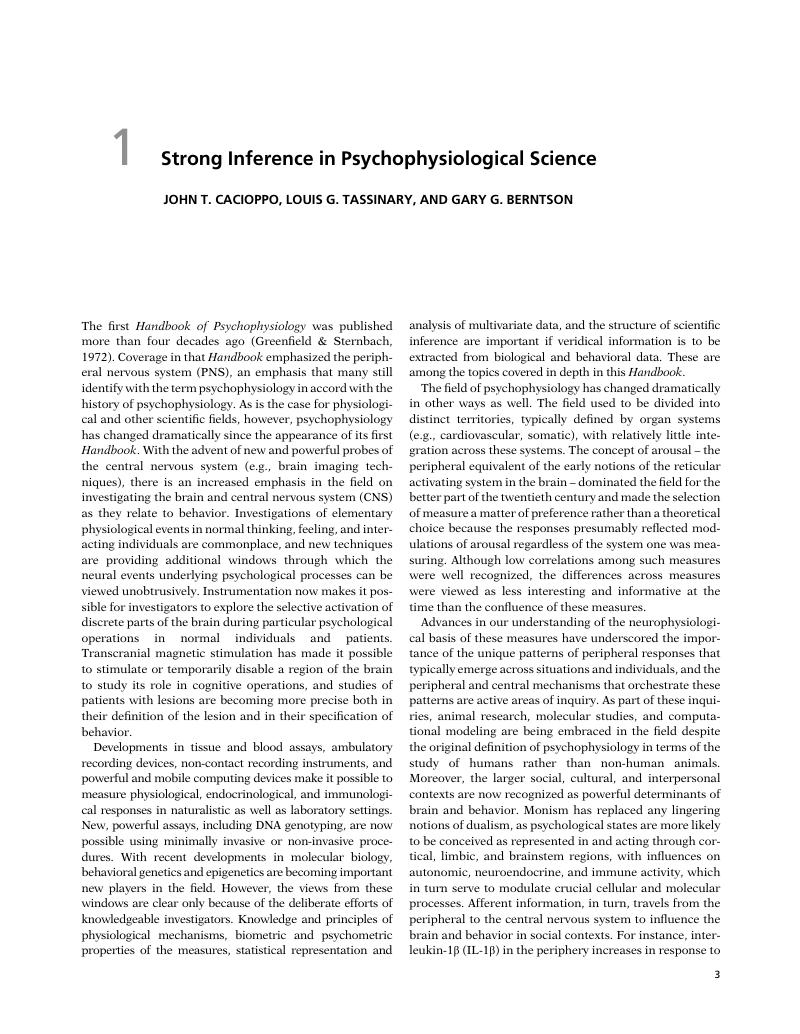Book contents
- Handbook of Psychophysiology, Fourth Edition
- Handbook of Psychophysiology
- Copyright page
- Contents
- Figures
- Plates
- Tables
- Contributors
- Foundations
- 1 Strong Inference in Psychophysiological Science
- 2 A Neuroscience Framework for Psychophysiology
- 3 Neuropsychology
- Systemic Psychophysiology
- Topical Psychophysiology
- General Methods
- Index
- Plate section (PDF only)
- References
1 - Strong Inference in Psychophysiological Science
from Foundations
Published online by Cambridge University Press: 27 January 2017
- Handbook of Psychophysiology, Fourth Edition
- Handbook of Psychophysiology
- Copyright page
- Contents
- Figures
- Plates
- Tables
- Contributors
- Foundations
- 1 Strong Inference in Psychophysiological Science
- 2 A Neuroscience Framework for Psychophysiology
- 3 Neuropsychology
- Systemic Psychophysiology
- Topical Psychophysiology
- General Methods
- Index
- Plate section (PDF only)
- References
Summary

Information
- Type
- Chapter
- Information
- Handbook of Psychophysiology , pp. 3 - 15Publisher: Cambridge University PressPrint publication year: 2016
References
Accessibility standard: Unknown
Why this information is here
This section outlines the accessibility features of this content - including support for screen readers, full keyboard navigation and high-contrast display options. This may not be relevant for you.Accessibility Information
- 13
- Cited by
